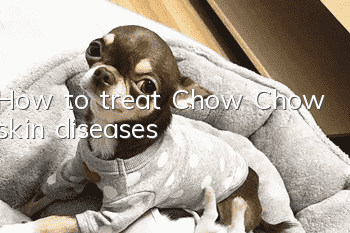How to treat Chow Chow skin diseases

Treatment methods for skin diseases in Chow Chows:
1. Parasitic diseases: Chows have thick fur. When treating skin diseases caused by parasites, it is necessary to First use sulfur soap to bathe the Chow. Although it will damage the dog's skin, it has an excellent insect repellent effect. Then just spray some repellent on the areas with parasites on the Chow Chow.
2. Bacterial infection: Dark, humid, and unhygienic living environment are the root causes of bacterial skin diseases in Chows. In this case, attention should be paid to applying sterilizing ointment to the affected area in a timely manner, and at the same time, the hygiene of the living environment of the Chow should be cleaned.
3. Hygiene and cleanliness: ensuring that the Chow Chow’s living environment is dry and clean is the fundamental way to prevent Chow Chow from contracting skin diseases. Cleaning the kennel immediately after the Chow is infected with a skin disease can prevent the Chow from relapse after recovery and reduce the risk of the Chow contracting skin diseases again in the future.
Symptoms of skin diseases in Chow Chow dogs:
1. Parasitic skin diseases: no obvious itching, skin exudation, scabs, and wrinkles . Mainly occurs on the head, around the eyelids and at the ends of the limbs. Scabies mites are characterized by severe itching and eczematous dermatitis, which mainly occur on the face, auricles and ventral side. Otoitch mites are characterized by itching of the ears and brown discharge in the auricles.
2. Fungal skin diseases: characterized by scales, scabs, round hair loss or hair breakage lesions on the skin. Most commonly occur on the head, feet and legs.
3. Bacterial skin disease: The location of the disease is uncertain, and it is characterized by papules, pustules, folliculitis, chapped skin and no itching; interdigital pyoderma is seen in the toes of one limb or four limbs of dogs. Pustules develop.
4. Allergic skin diseases: It can be divided into allergic dermatitis, urticaria, eczema, etc. It is characterized by skin itching, papules, and erythema. In severe cases, skin thickening, lichen-like changes, and wrinkles may occur, accompanied by pigmentation.
5. Seborrheic dermatosis: no itching, a large amount of gray-white bran-like scales or yellow-brown greasy dander between the hairs, and skin pigmentation.
- How to stop dogs from eating randomly
- How to train a beagle? When is the best age to start training a beagle?
- How to train a dog to be like a leader? Be sure to read these steps!
- What should I do if my golden retriever has diarrhea? What treatment is needed?
- What should I do if my dog eats something with maggots?
- What's going on when a dog rubs his face on the ground?
- Can a dog’s fever cause hepatitis?
- Homemade methods for treating parvovirus in dogs
- Do dogs need to brush their teeth?
- How much does a Shih Tzu cost? What should you pay attention to when buying a Shih Tzu?



